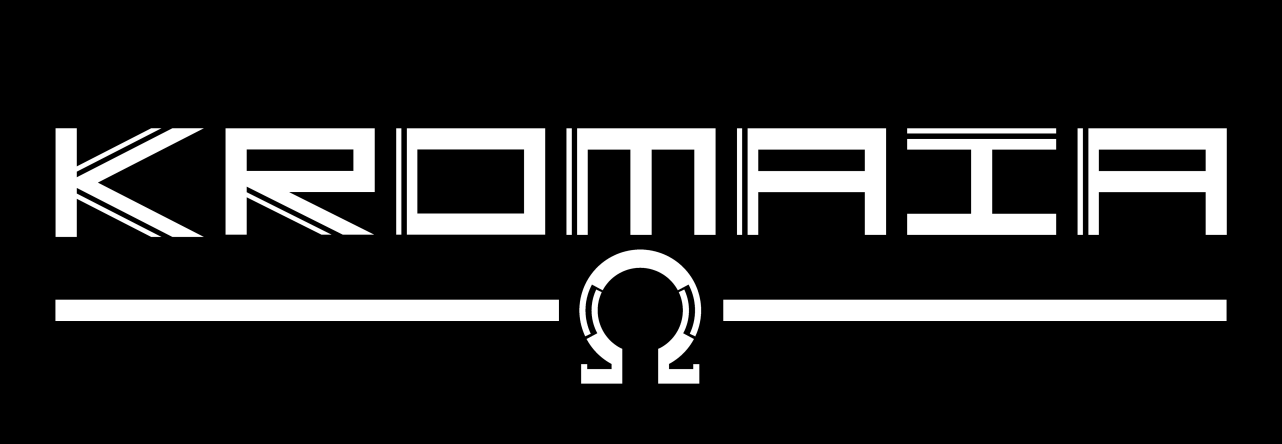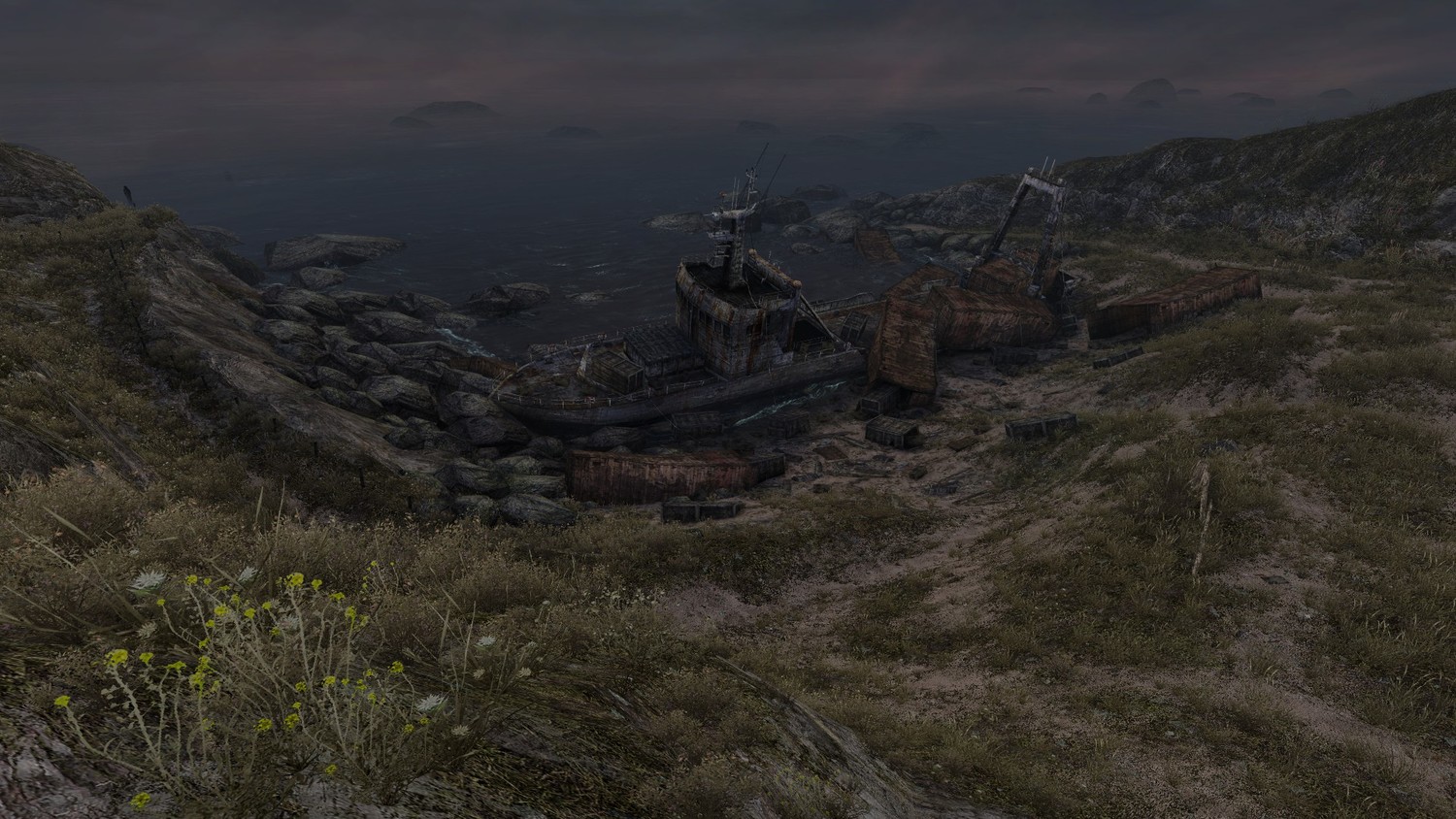
Review: Kromaia Ω
Posted by Eric G on December 15th, 2015 | 0 Comments | Tags: Kromaia , Rising Star Games
Before booting it up for the first time, I had never heard of Kromaia Ω. The original game (without the Omega) released on Steam in October of 2014 and has seen much success on the platform since then. Initially, I was pretty lost by the menus and the game’s presentation as a whole. The buttons themselves are written in an alien language that looks something like cuneiform, and the voice-over work can be best described as reverb-laden jibber-jabber. What’s surprising, then, is how into the game I got almost immediately. This is the type of world building that Bloodborne and Mad Max: Fury Road have so much success with – little to no explanation; dive in and go with it. There are a couple of opening cinematics that introduce the narrative, prompting you to wake up and hunt gods. After bemusedly getting through them, it’s time for the game proper to begin.
A bare-bones tutorial guides you through the process of steering and shooting in space. I’ve had a tough time with space-shooting games in the past. However incredible I think its aesthetics are, I couldn’t get over the controls in Galak-Z, for example. Kromaia does not suffer from the same input frustrations. It took all of a few seconds before I was darting about in three dimensions with ease and a perhaps inflated sense of precise control. (NOTE: Within the context of the game, you’re piloting what’s referred to as an ‘armor’. I may use ‘ship’ and ‘armor’ interchangeably. Old habits…) The left analogue stick flies forwards, backwards, left, and right. The O and X buttons lift and drop your armor, respectively. R1 and L1 are your yaw pitching buttons (rotating the ship) while the other triggers are primary and secondary fire. Once you feel confident moving about, triangle boosts in whatever direction you’re currently holding. The game feels great, an attribute I can’t stress enough for something that looks like Kromaia does: abstract.
At first glance, I was reminded of Rez, the beloved rhythm space-shooter of yore. The more I played, though, I got hints of Gravity Rush, the open-world Vita title with no universally defined up or down. The worlds in Kromaia Ω (there are four of them, not including the hub section) are constructed with a strong sense of architectural liberty. Think of the scene in Inception when Ariadne learns how to build dreams. The physics in this game are as confounding as the narrative. Structures are rotated and placed in a way that doesn’t quite make sense at first. You can even outright stop your armor; a funny fact considering your environment. However ridiculous this may all seem, it works splendidly in creating a game that feels cohesive, and, perhaps more importantly, that feels good. The ominous, spacely soundtrack also lends a hand in this regard. Fun fact: the music is the only part of the game outsourced. The rest was created by two people. More info on their site.
The overall objective in Kromaia Ω is to defeat four gods, a mission set forth by a mysterious inner-voice. To do so, you must enter a colored portal, collect 20 ‘jumpgate components’, then go head-to-head with the mondo-machina. There’s a ship armor associated with each area: Yellow, Green, Red, and Blue. The important gameplay aspect here is that each armor shoots fairly differently from the last. The reason you start by piloting the yellow armor is because it’s the simplest. Its primary fire is a machine gun while its secondary emits a shotgun blast that is effective at dispatching nearby enemies. The green armor shoots weak homing bullets; the red armor fires lasers; and the blue armor uses an ultra-powerful close-range sword. The areas themselves feel unique as well. The first (yellow) is fairly straightforward while the last (blue) requires a good bit of piloting expertise. Boss fights are fun, if a bit simple. The vulnerable points are usually glowing, and each god only possesses a few attack sequences that can be quickly learned.
By the time you beat the fourth god, if you haven’t noticed it in the hub world, you’ll be told to go back and replay levels with all of the armors. It’s actually interesting that the old levels aren’t necessarily easier based on what ship you’re using. I had a tough time taking down Vermis (the first boss) with the green armor, for example. What I discovered during my several playthroughs were the exploratory possibilities in Kromaia Ω. My first time through, I simply flew from jumpgate component to jumpgate component, thrashing enemies in my wake and linearly progressing toward my goal. It almost felt like a racing game with checkpoints. In my replays, though, I found quite a few secret spots off the beaten path. As if I didn’t enjoy the game already, this really tipped the scales for me. Where I previously admired the level design, I was now implicitly motivated to actually explore it firsthand. I don’t want to spoil much (discovery is fun!), but there is one level where you have to find four hidden keys to unlock a mausoleum that contains a Thisauros. There are twelve of these secret objects to discover. In normal play (beating all of the levels with all of the armors), I got ten of them. One of the Thisauros pickups unlocked Co-op Mode, which is funny because I thought I had already played Co-op on the Extra Life stream. There’s also a local co-op mode. Basically, you can play Kromaia Ω with two local controllers right out of the box, so to speak. I controlled the shooting while a buddy of mine piloted. The proper Co-op Mode, activated by pressing the down button on the D-Pad, allows the shooting player to actually move the aiming reticle from the center of the screen. It immediately reminded me of the Yavin mission of the old Star Wars Trilogy arcade game. While I found the Co-op Mode to be pretty cool, it was extremely easy to lose the reticle in all of the colorful action going on on-screen. An option to snap the reticle back to the center of the screen might have assuaged this problem.
In all, Kromaia Ω is a diamond in the current outpouring of PSN titles that shouldn’t be overlooked based on its price tag. There are a couple of other game modes included in this new package, but the main campaign will take around eight enjoyable hours to complete. I didn’t even mention the unlockable grapple hook, a feature that opens up new levels of piloting expertise.
A copy of this game was provided by the publisher for review purposes. For more info on our review policy click here.
General Info
- Developer: Kraken Empire
- Publisher: Rising Star Games
- Platforms: PS4
- Release Date: November 2015
- Price: $29.99, £19.99/€24.99/AU$30.95
- Genre: Free-Roaming, Shmup, Space Combat
- Players: 1-2 (Local)
- Ratings: Everyone 10+, PEGI 7
Score:
What I Like:
- Abstract graphics
- Game feel
- Speed
What I Dislike:
- Losing reticle in Co-op Mode




